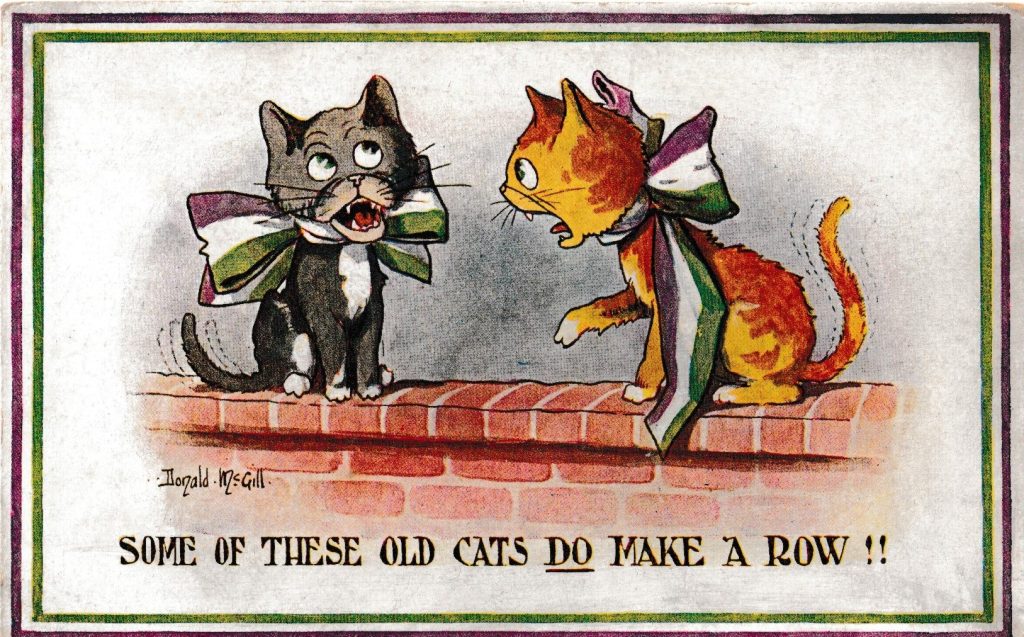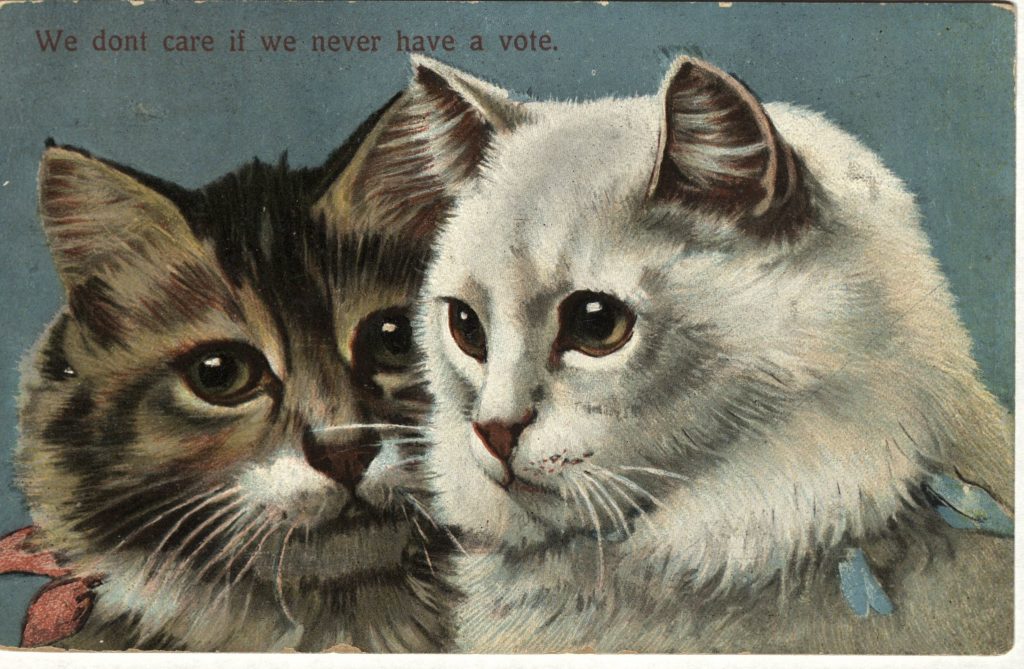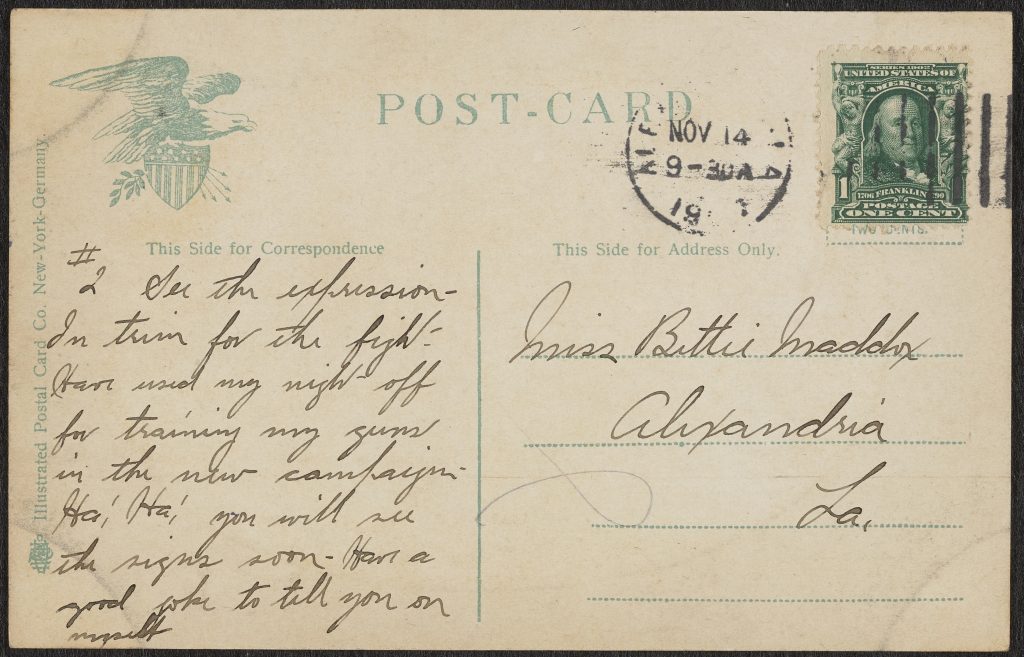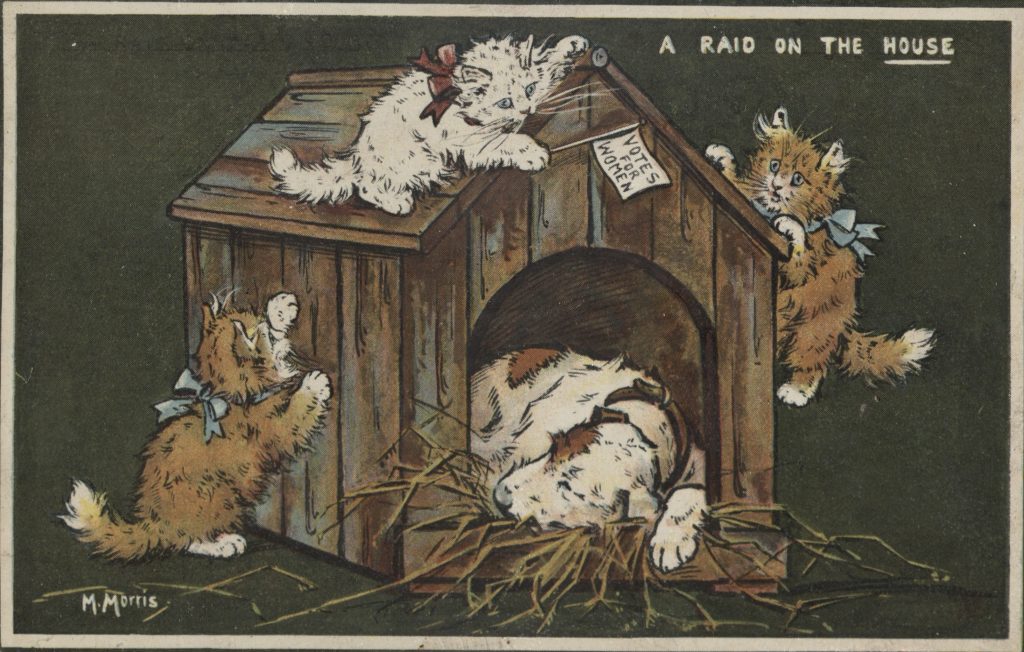Do you know what is totally not the cat’s meow? Innocently waking up one morning to discover that a politician’s comments on the allegedly doomed lives and dangerous voting ways of ladies who aren’t just child-free, but cat enthusiasts as well, was causing a stir throughout the land. As a member of the lesser known subgroup of child-free ladies, the dog lady (my dog’s name is Archie and he is super-cute and is besties with Mabel, a dog who has a striking resemblance to the character actor Karen Black), I just had to laugh. After all, linking cats to the perceived absurdity of women voting is so 1909.
Don’t believe me? Let’s look at some of the postcards from our incredible Women’s Suffrage Collection. Postcards became a global phenomenon in the late 19th century as they were an affordable way to communicate with friends and family, and a frugal means to promote businesses and political causes. Colorful and collectible, they were conversation pieces that documented the trends and cultural currents of the times, much like memes today. Indeed, postcard manufacturers hired commercial artists and photographers to create postcards that people would cherish, covet, and perhaps find humorous. The illustrations went far beyond depictions of scenic views and sentimental greetings to incorporate topics that were quite controversial. It is no wonder, then, that the issue of women’s suffrage was among the most popular subjects for commercial postcards during the start of the 20th century, with illustrations representing everything from absolute support for the enfranchisement of women to horrible visions of what a “petticoat government” might look like.
Cats were an important part of the visual language of women’s rights at the time. Some of the importance simply had to do with popularity — postcards featuring cute or humorous animals sold well. But the use was also meant to be symbolic, leaning into rather complicated Victorian notions of cats being a part of the demure domestic world, and dogs representing the rugged world of masculine independence.
Below are two examples of cat-themed women’s suffrage postcards produced around 1908 (postcards of the era do not always include publisher info or dates printed, so we estimate dates based on other clues like postal stamps). Looking at these examples today, we may assume that they are meant to advance the cause of women voting. After all, the cats are so cute and the artwork so charming! But the imagery may have been viewed by some differently in the early 20th century. Both of the postcards prominently include green, white, and purple — the official colors of England’s Women’s Social and Political Union (WSPU). While the WSPU was popular, it nonetheless had its fair share of detractors. If you did not support the WSPU, you could view these cards as mocking the idea of women at the ballot box. One cat is shrieking “I want my vote,” decidedly unladylike behavior, and the other is wearing a striking hat similar to what many suffragettes in England wore at the time. Subtitled “An Advocate for Women’s Rights,” this card could suggest that the pampered house cat is too concerned with the power of accessories to effectively be trusted with the vote.
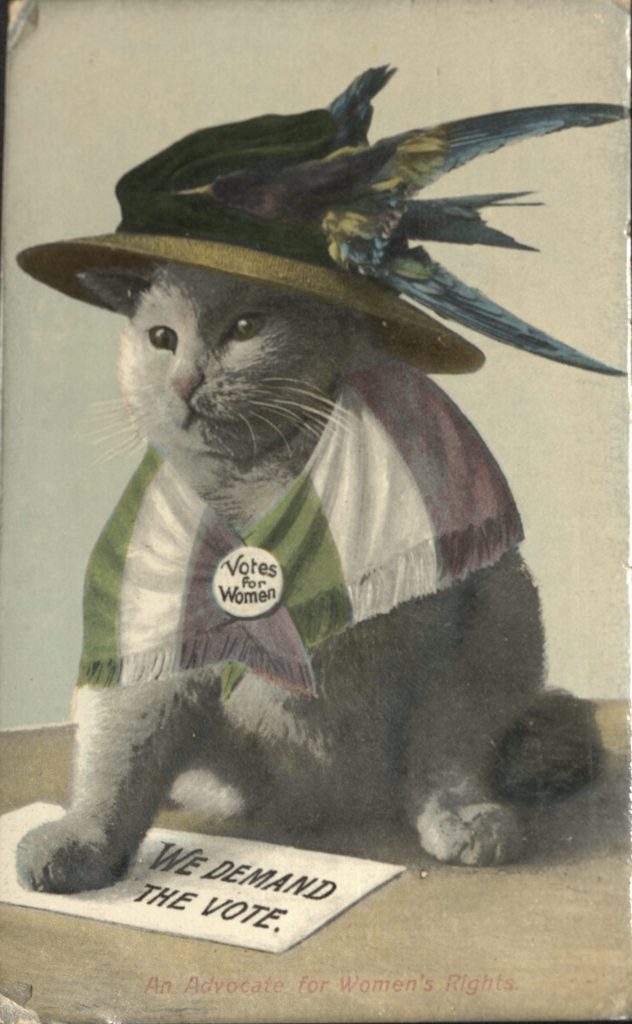
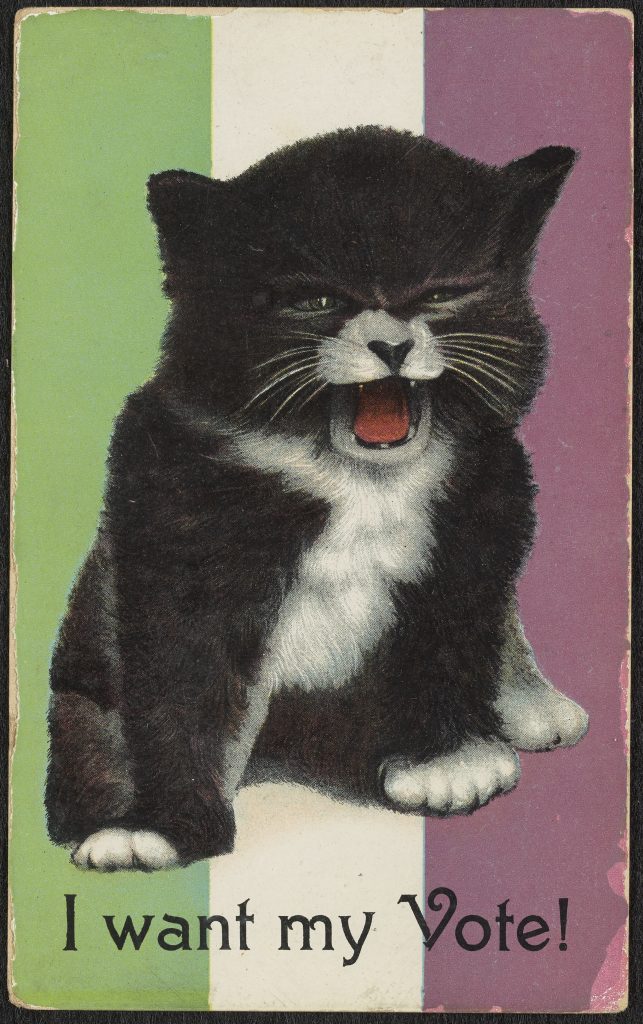
But then you have other cat-themed postcards where the message is clearly against the actions of the WSPU, such as this card by Donald McGill which suggests that suffragettes are screaming harridans who have outlived their usefulness to society.
Lovely, pampered, content cats have no use for dramatically oversized bows. Modest with their accessories and lacking in ambition, they “don’t care if we never have a vote.”
But we also have postcards where the initial meaning could have become lost. The postcard “the Suffragette down with the Tom Cats” shows an aggressive cat ready to fight in honor of the “vote for shes.” Next to her is a companion card showing a bruised cat vowing to “never be a foolagain.” Could these be in support of women fighting for their rights, or meant to expose the danger women pose when advocating for justice, a danger that includes leaving behind the traits associated with the ideal of the angel of the house?
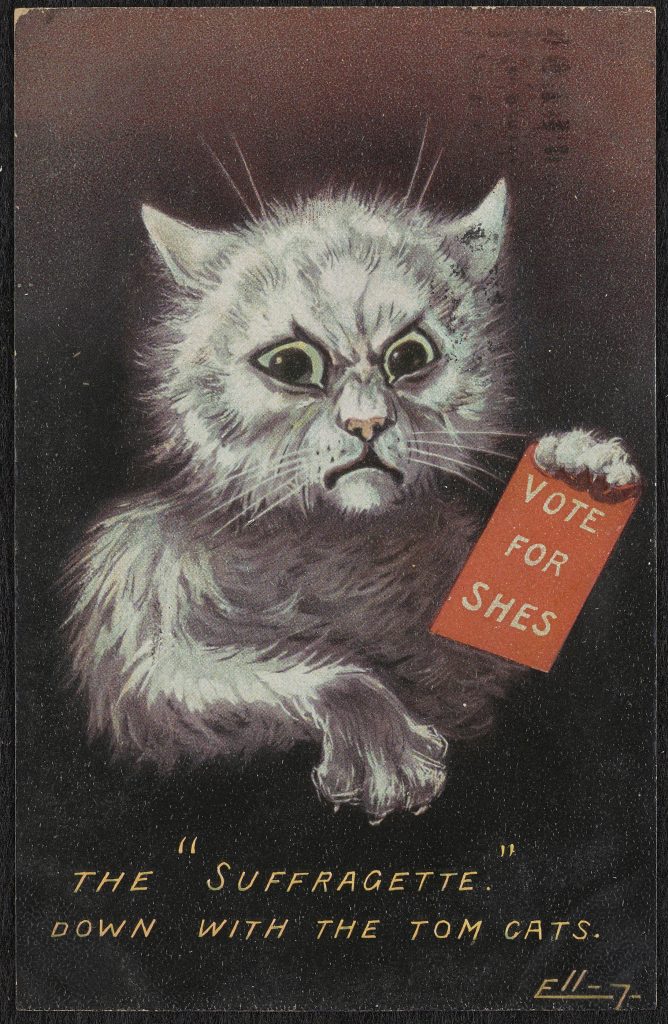
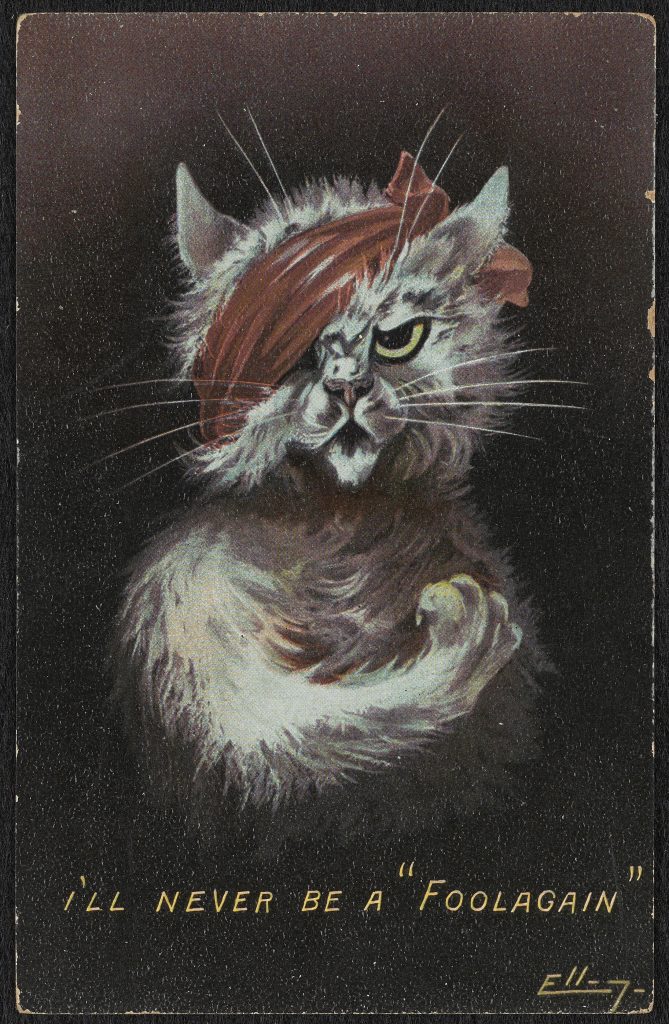
But perhaps we shouldn’t be too hard on ourselves if we can’t always decipher the intent of a postcard created by a commercial publisher. Postcards were not fixed images. Their meanings could be altered by people making changes to the artwork or even by the messages they would write on the back. Below is the message written on the verso of the “Down with the Tom Cats” card. What sort of campaign is the writer talking about? Could it have to do with pro-suffrage advocacy?
What do know for certain is that in the years prior to the Great War, a plethora of ephemera driven by the chatter surrounding women and the vote was coveted and collected in both the United States and England. From buttons, sashes, and games, to the humble postcard, questions concerning the place of women within the public sphere dominated popular culture. And perhaps what better agent to express such views than the cat! Want to see more examples of suffragette postcards? Check out our album featuring even more cats and even some dogs!

